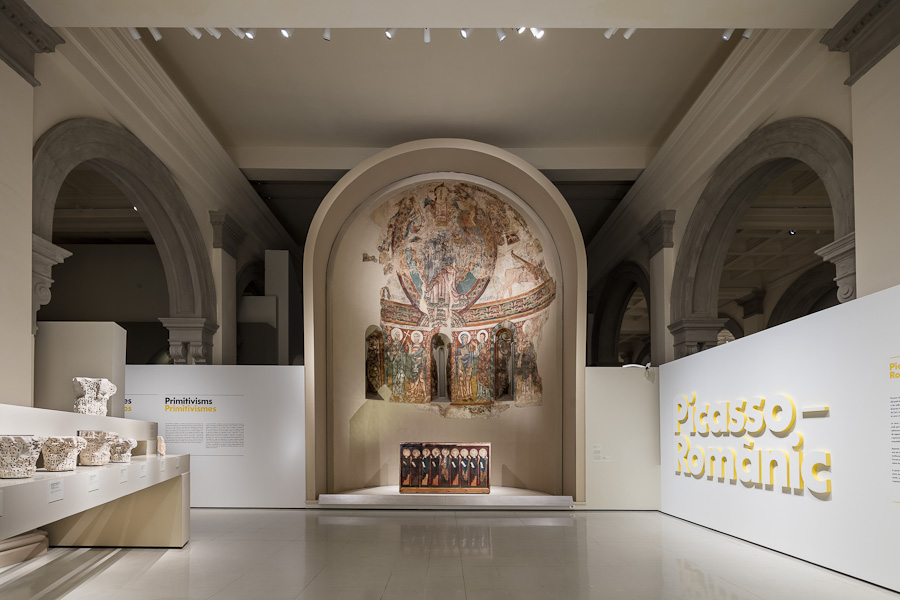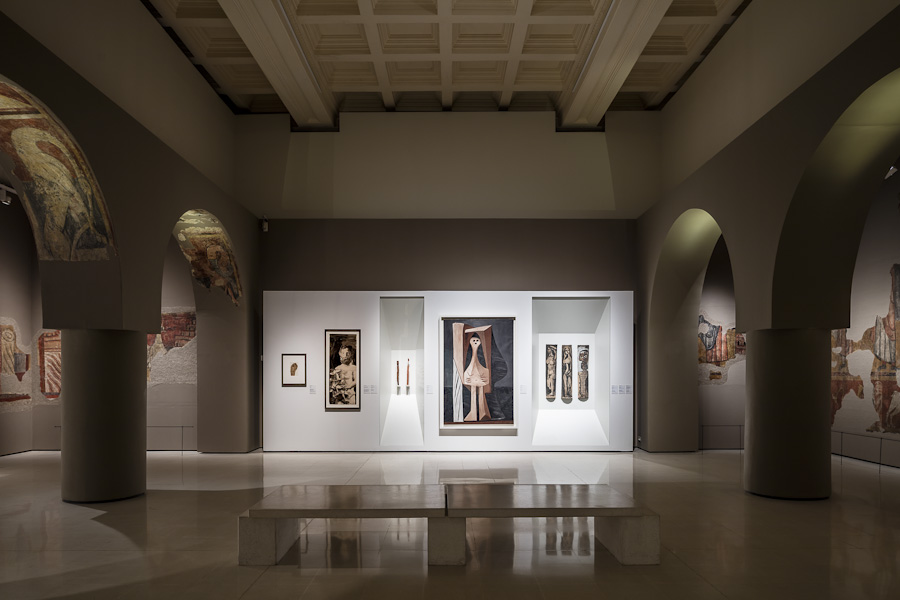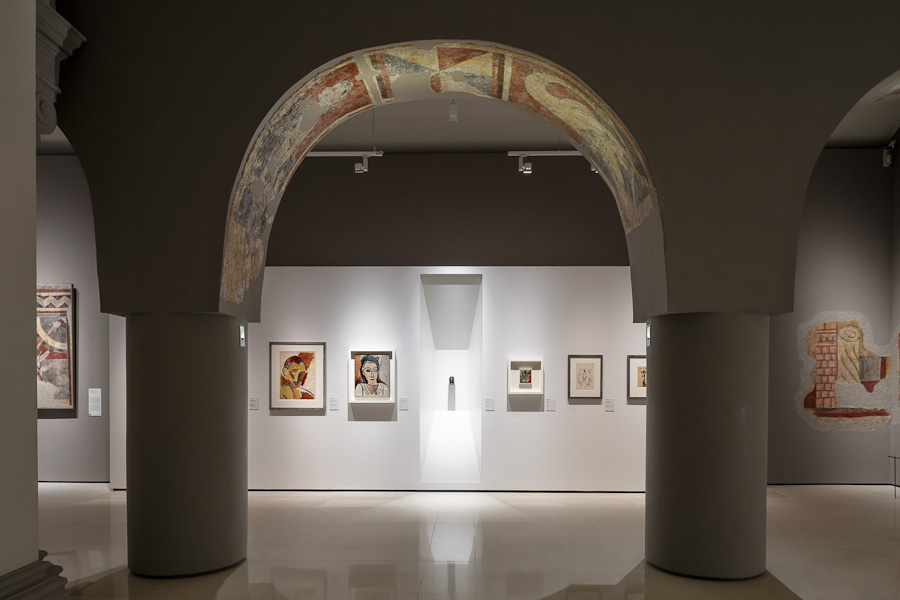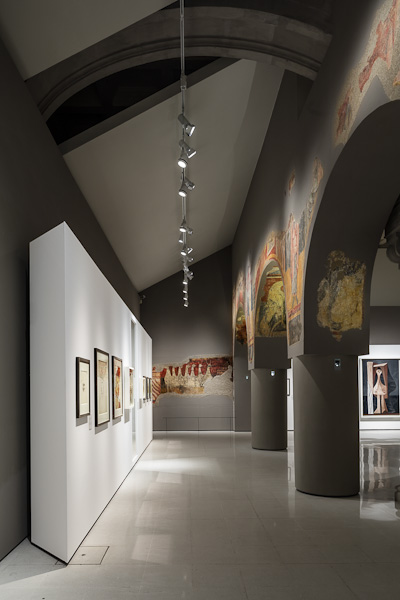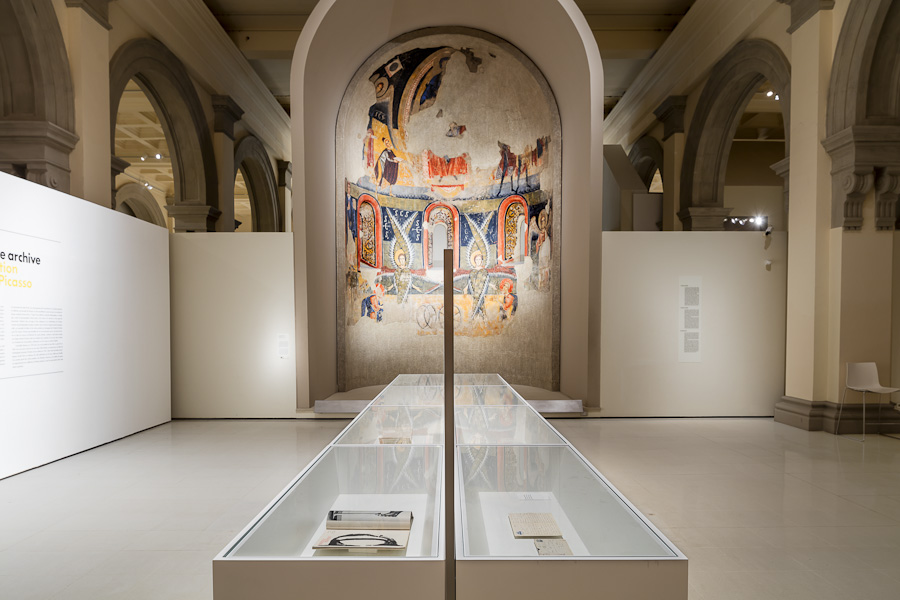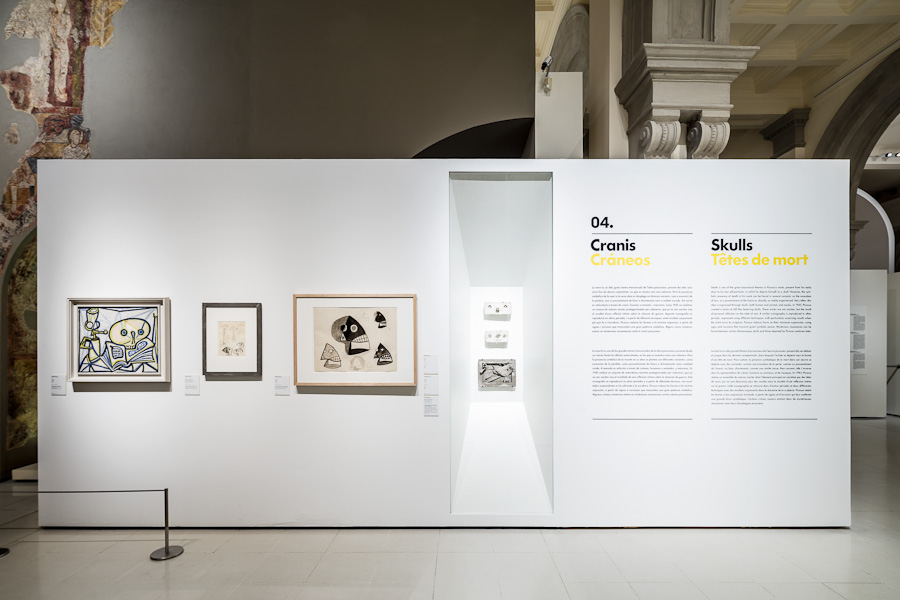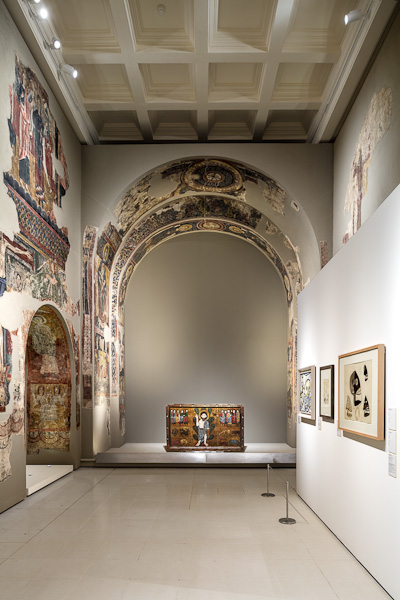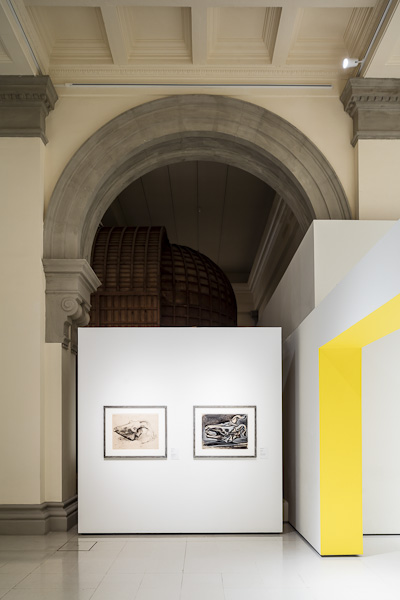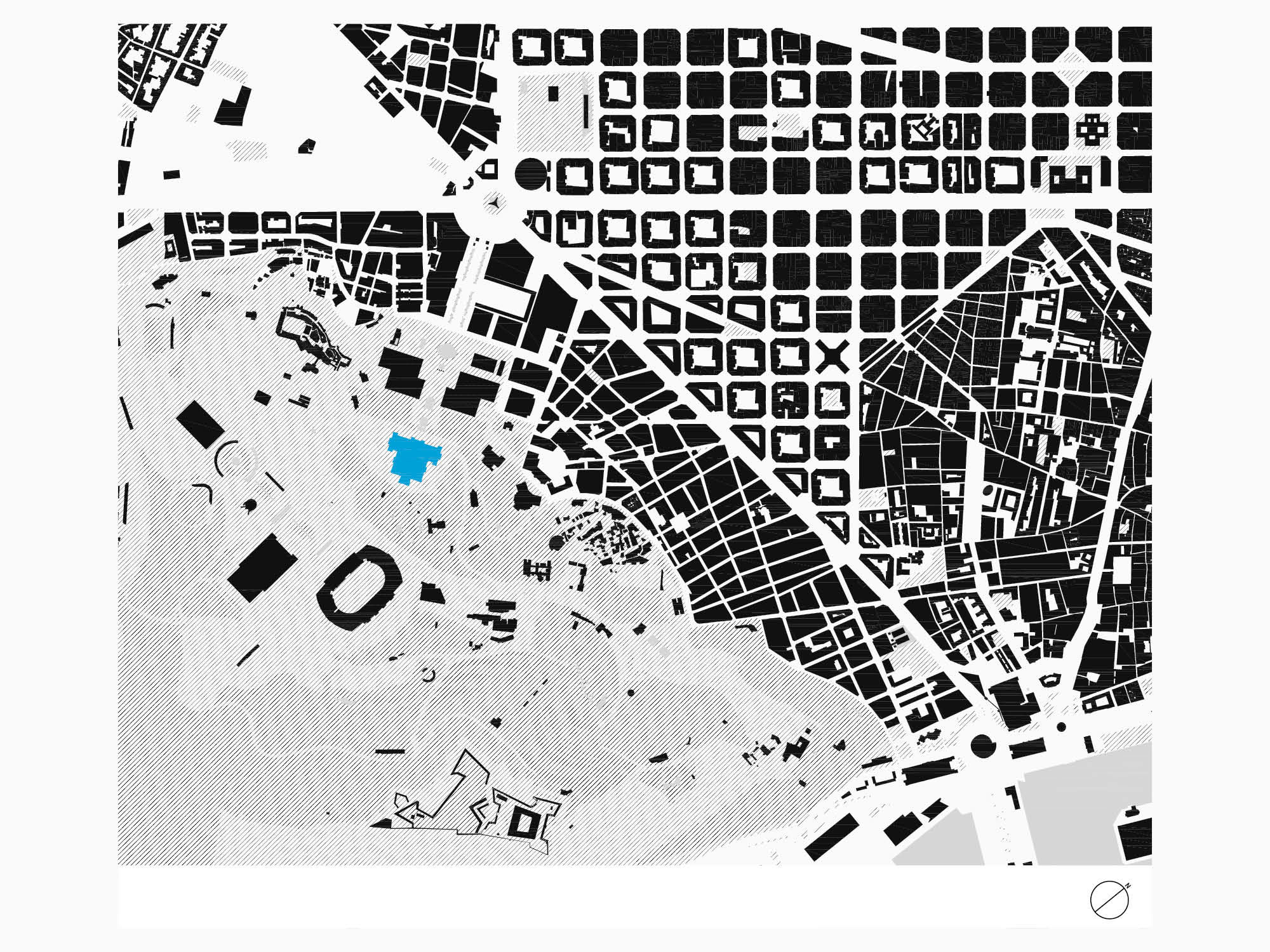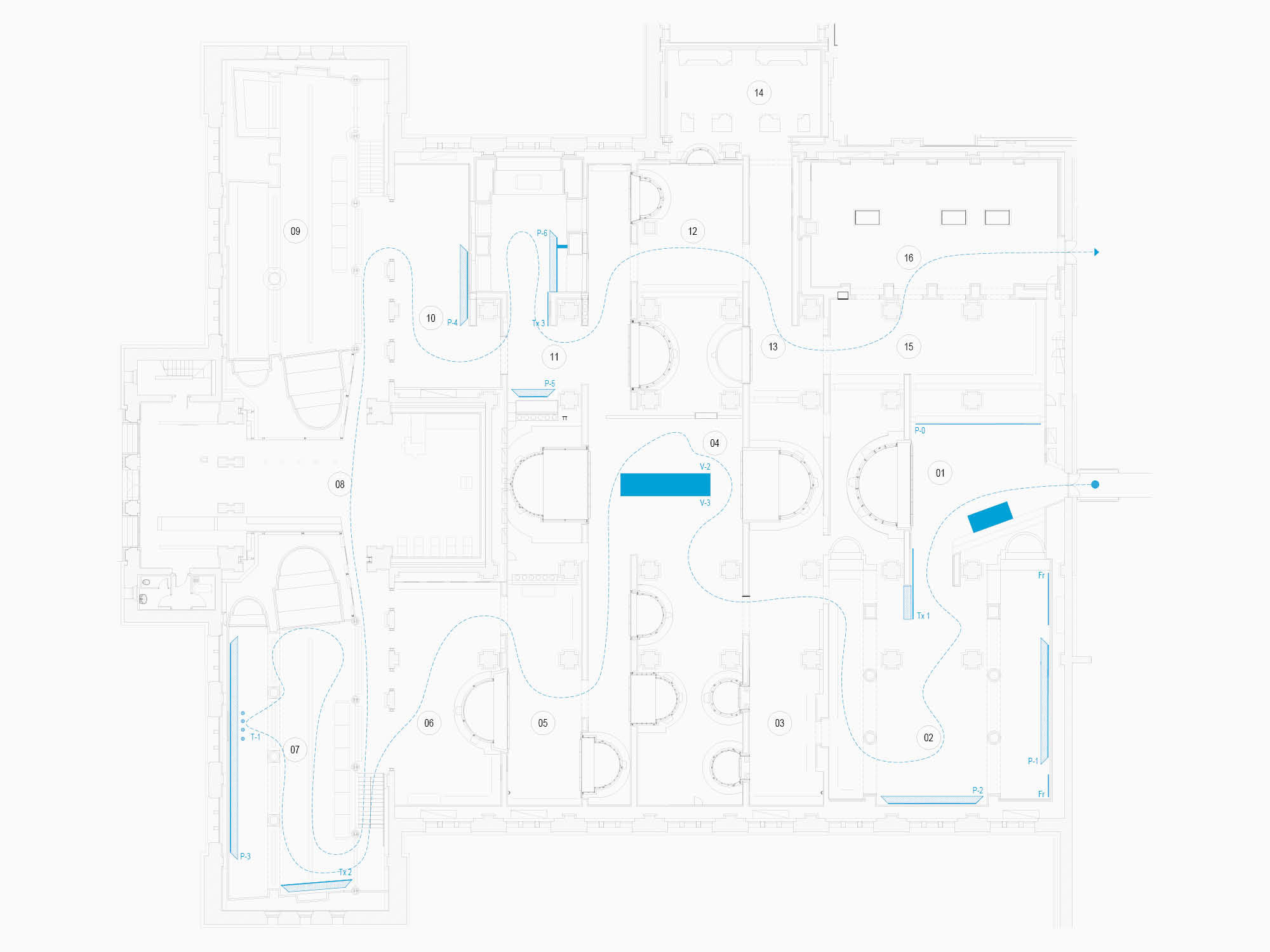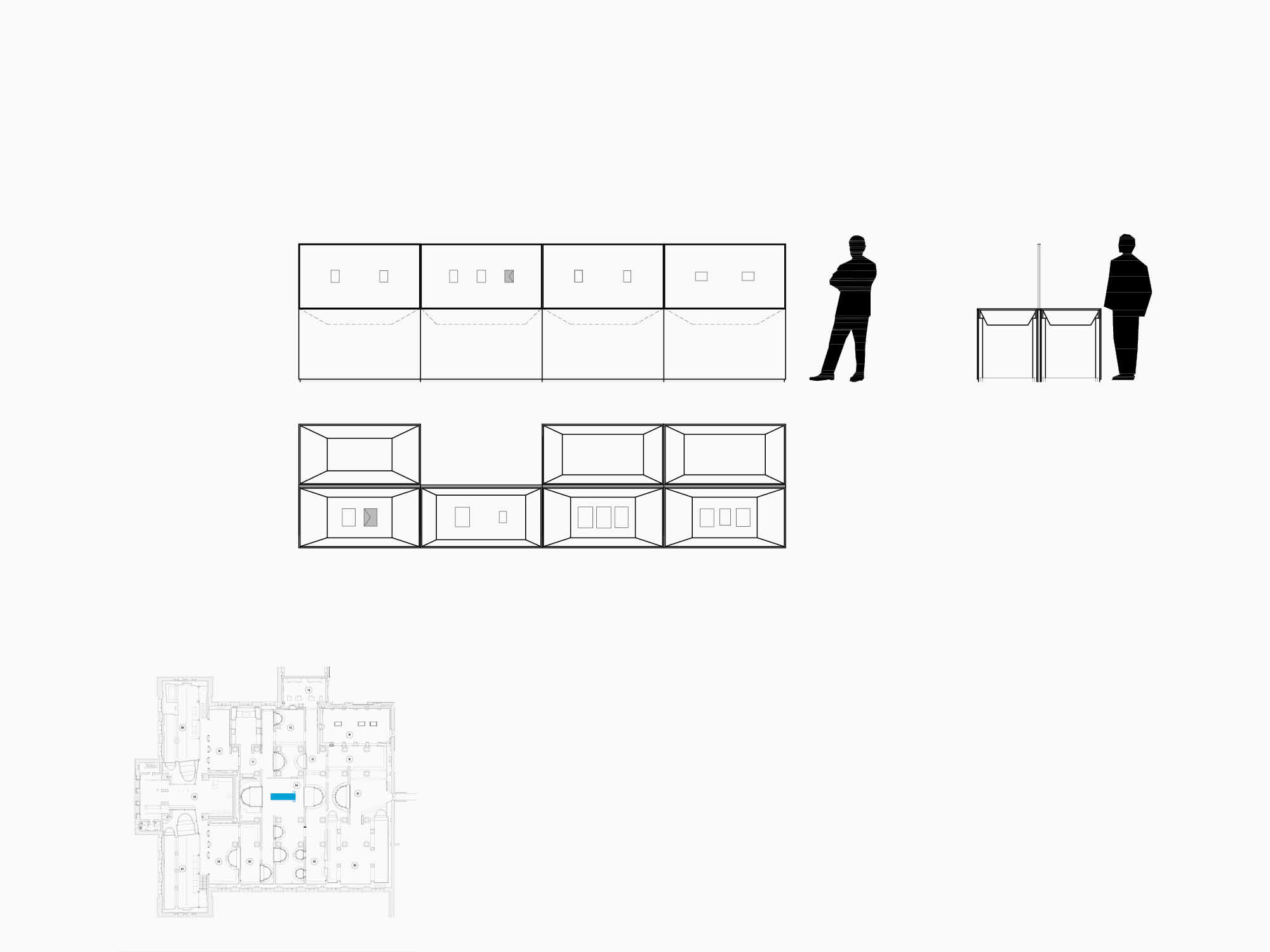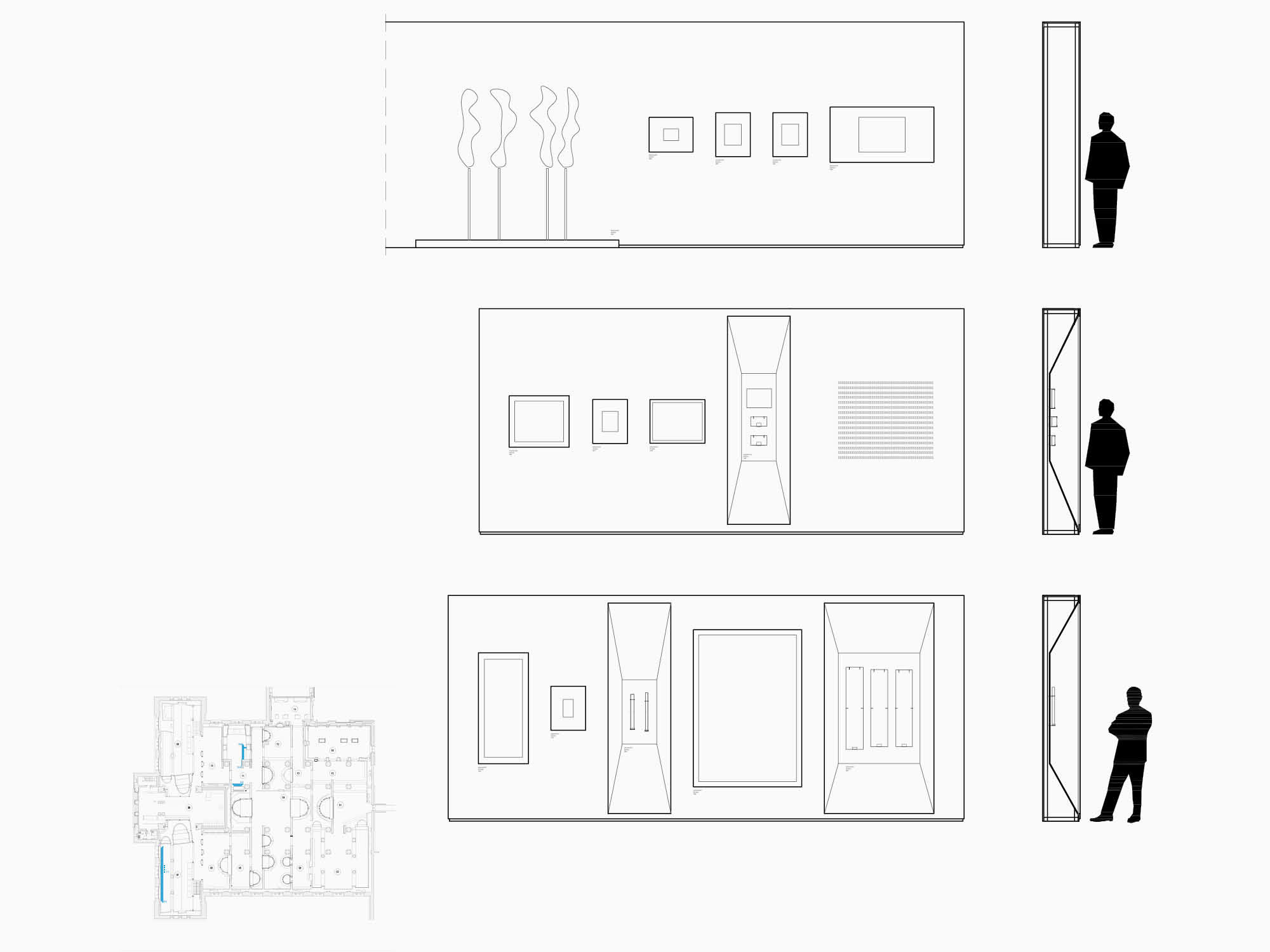Picasso-Romànic Exhibition, Spain,
2016
In 1934, Pablo Picasso visited the Romanesque collections of the current National Art Museum of Catalonia. He leaves the next day for Paris and will never return to Spain. From this visit and his previous stay in the village of Gósol in the Pyrenees (1906), Picasso will keep his life during a powerful memory of Roman Art. The exhibition "Picasso-Romanic" supervised by Juan José Lahuerta and Emilia Philippot, focuses on the relationship between the artist from Málaga and one of the most important collections of Medieval Art in Europe. All forty or so works (oils, drawings, ceramics, sculptures) and the selection of archival documents never before exhibited come from the Musée Picasso in Paris. This corpus is structured around three main axes: the stay in Gósol of 1906, the crucifixion, the skull. The design and scenography project responds to the main challenge of this exhibition:
To ensure that the Romanesque frescoes, the wooden structures of the reconstructed apses, the complexity of the spaces and the labyrinthine route of the rooms dedicated to the Romanesque art of the Mnac, do not phagocyte Picasso's works of such small dimensions. It was then that we decided to group Picasso's works on large white panels, recalling the idea of walls of a contemporary art gallery. These panels become three-dimensional frames, highlighting the precious works on a homogeneous and clear background. The walls, always detached from the walls, are made like leaves, by the diagonal cut of the lateral edges. They constitute a simple and effective dipositif which, as in a mise en abyme, allows the visitor to clearly identify the actors of the dialogue that this exhibition puts in scene.
To ensure that the Romanesque frescoes, the wooden structures of the reconstructed apses, the complexity of the spaces and the labyrinthine route of the rooms dedicated to the Romanesque art of the Mnac, do not phagocyte Picasso's works of such small dimensions. It was then that we decided to group Picasso's works on large white panels, recalling the idea of walls of a contemporary art gallery. These panels become three-dimensional frames, highlighting the precious works on a homogeneous and clear background. The walls, always detached from the walls, are made like leaves, by the diagonal cut of the lateral edges. They constitute a simple and effective dipositif which, as in a mise en abyme, allows the visitor to clearly identify the actors of the dialogue that this exhibition puts in scene.
Location
Museu Nacional d’Art de Catalunya Parc de Montjuïc
08003 Barcelona
Museu Nacional d’Art de Catalunya Parc de Montjuïc
08003 Barcelona
Year of the project
2016
2016
Start of construction
2016
2016
End of construction
2016
2016
Photographs
© Adrià Goula, Marta Merida
© Adrià Goula, Marta Merida
